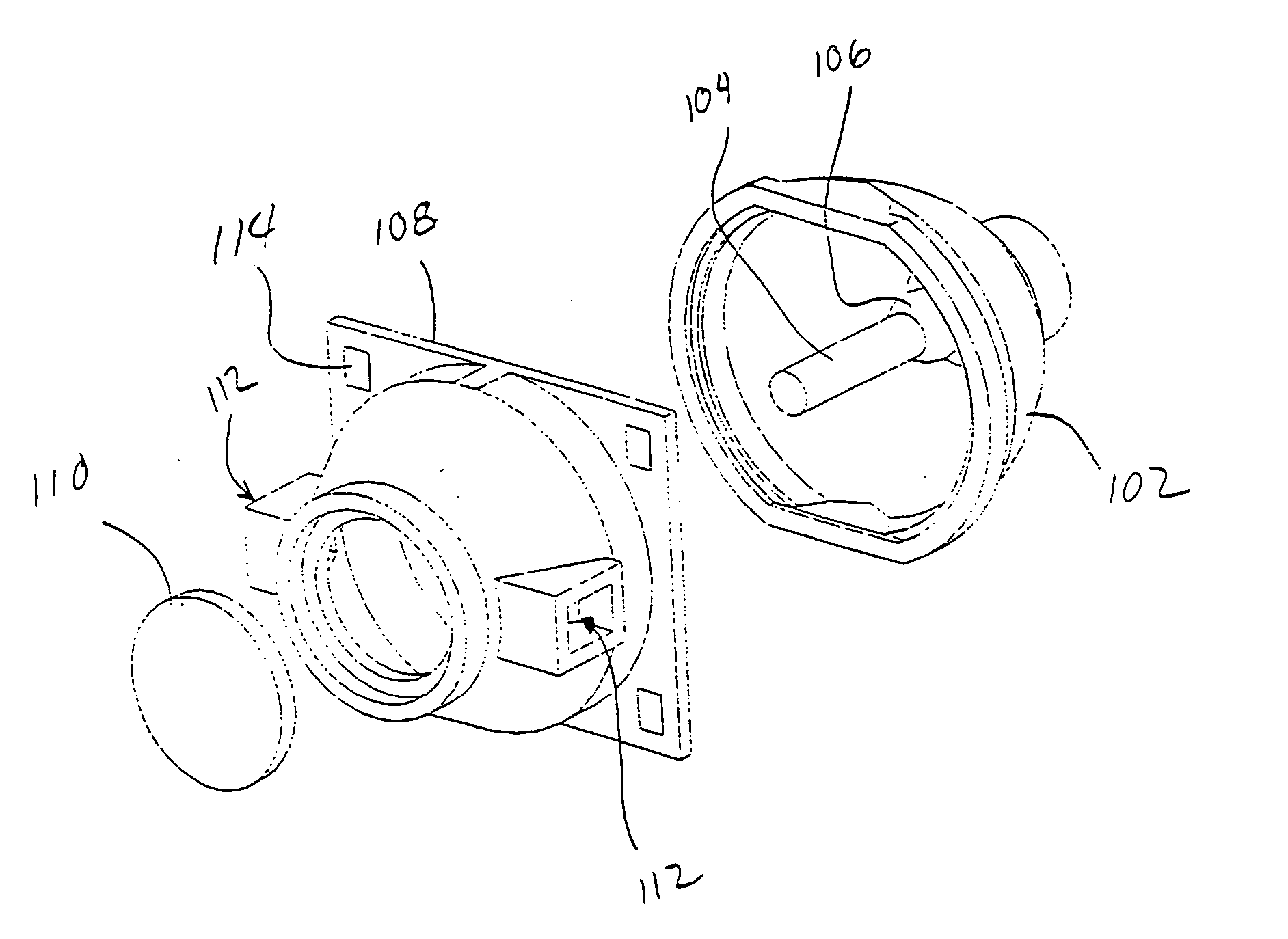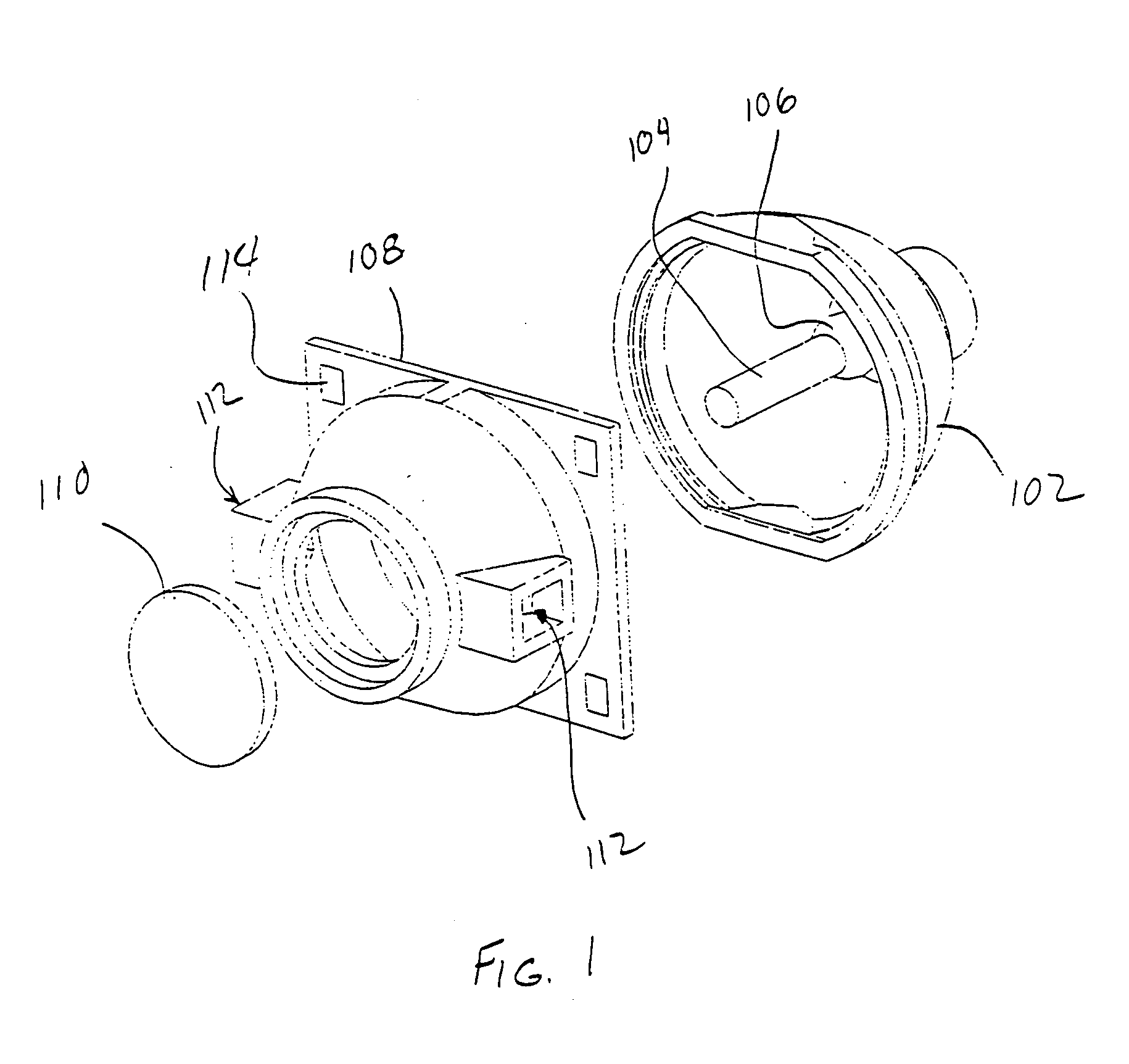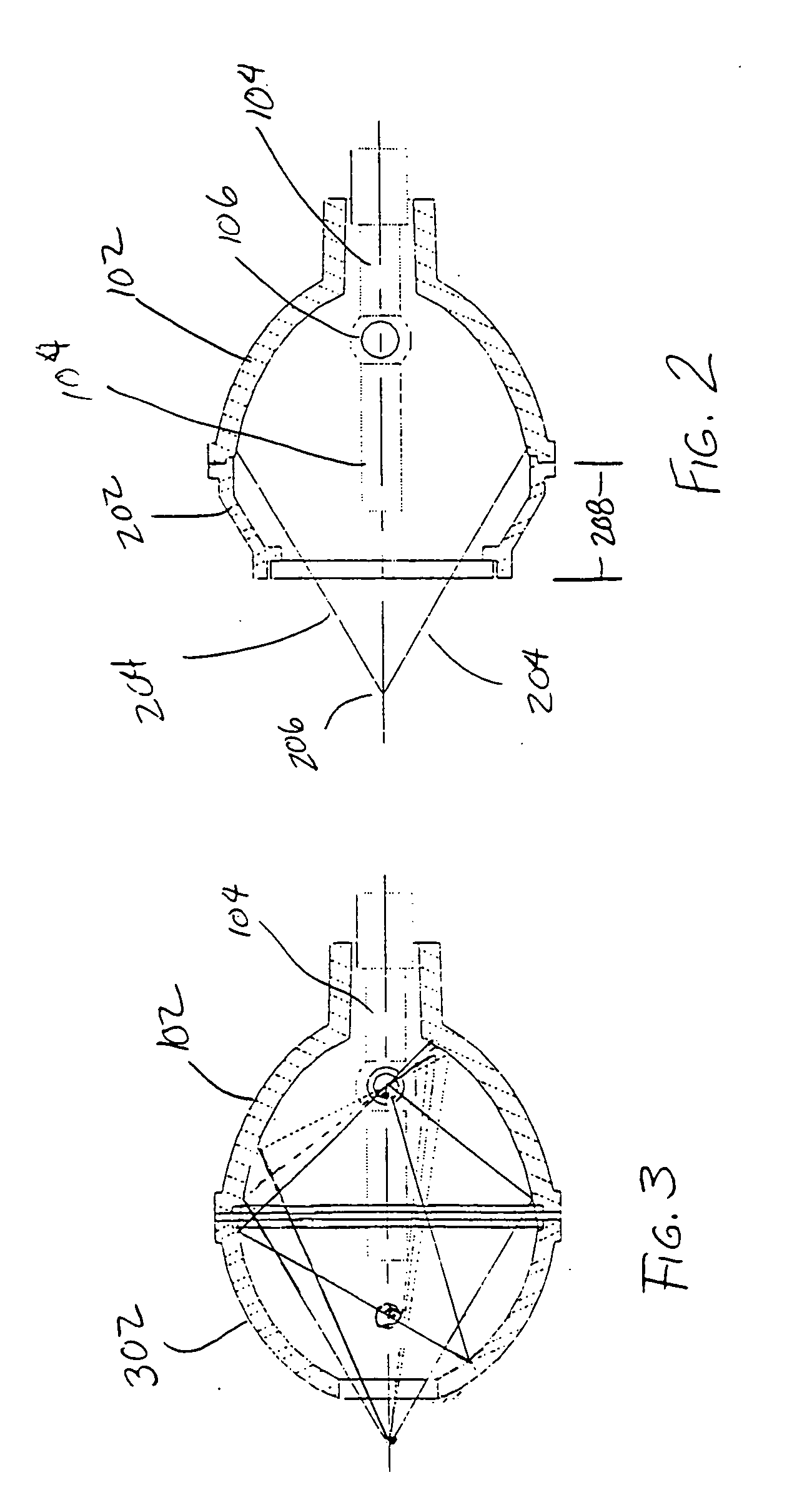Lamp reflector assembly
a reflector and lamp technology, applied in lighting safety devices, lighting and heating equipment, instruments, etc., can solve the problems of reducing the size and weight of the projector, and challenging the production of further reductions in size and weight, so as to prolong the life of the lamp, reduce the size of the display system, and improve the access to the arc lamp
- Summary
- Abstract
- Description
- Claims
- Application Information
AI Technical Summary
Benefits of technology
Problems solved by technology
Method used
Image
Examples
Embodiment Construction
[0019] A new lamp assembly has been developed that improves the cooling of the lamp while protecting users of the lamp from explosions, yet allows the use of smaller reflectors and fewer parts to reduce the overall size of the display systems.
[0020]FIG. 1 is a cross section perspective view of a lamp assembly according to one embodiment of the present invention. In FIG. 1, a reflector 102 contains the lamp element, or burner 104. The burner has an electrode extending from each end and a chamber 106 in the middle in which the arc and plasma are contained. The reflector 102 typically is an ellipse, with the arc positioned at one foci of the ellipse. An elliptical reflector is preferred since it focuses the light from the arc without requiring a condenser lens.
[0021] A reflector extension 108 is designed to mate to the reflector 102. The reflector extension 108 has a first open end toward the reflector 102. The first open end typically is in contact with the reflector 102 to form a s...
PUM
 Login to View More
Login to View More Abstract
Description
Claims
Application Information
 Login to View More
Login to View More - R&D
- Intellectual Property
- Life Sciences
- Materials
- Tech Scout
- Unparalleled Data Quality
- Higher Quality Content
- 60% Fewer Hallucinations
Browse by: Latest US Patents, China's latest patents, Technical Efficacy Thesaurus, Application Domain, Technology Topic, Popular Technical Reports.
© 2025 PatSnap. All rights reserved.Legal|Privacy policy|Modern Slavery Act Transparency Statement|Sitemap|About US| Contact US: help@patsnap.com



